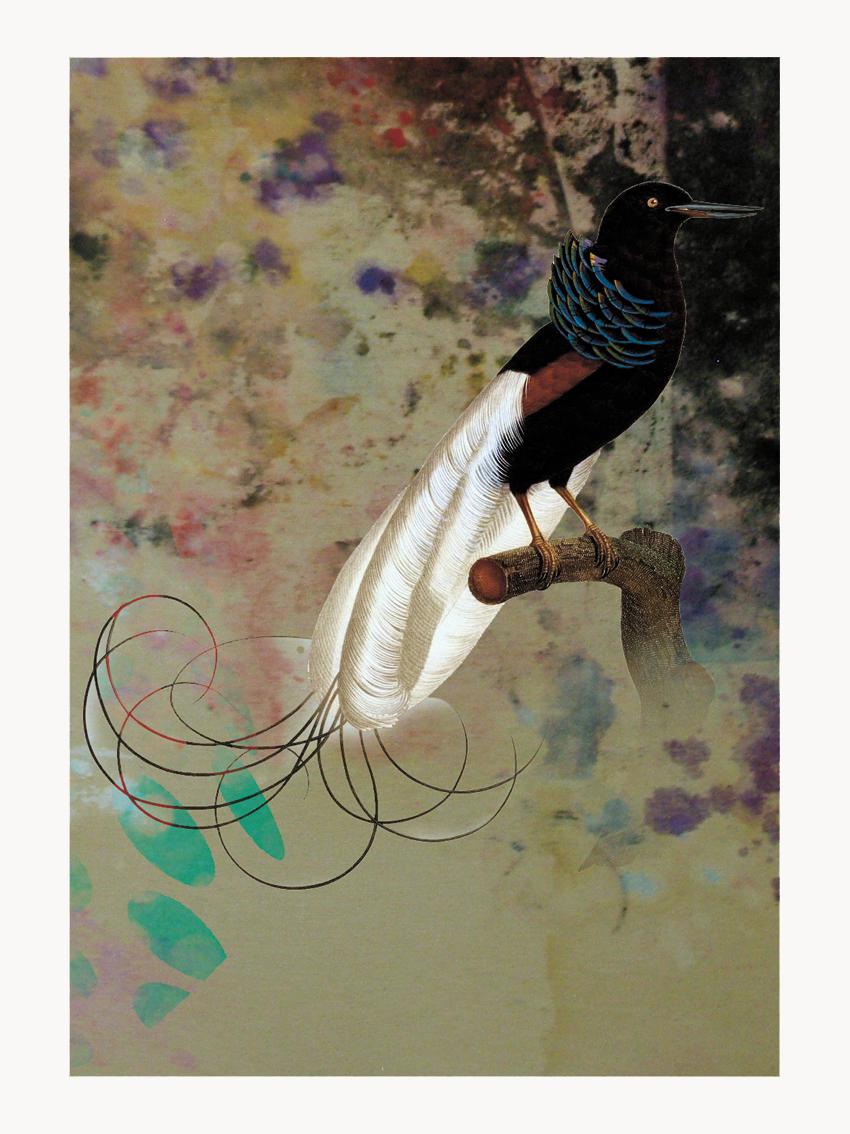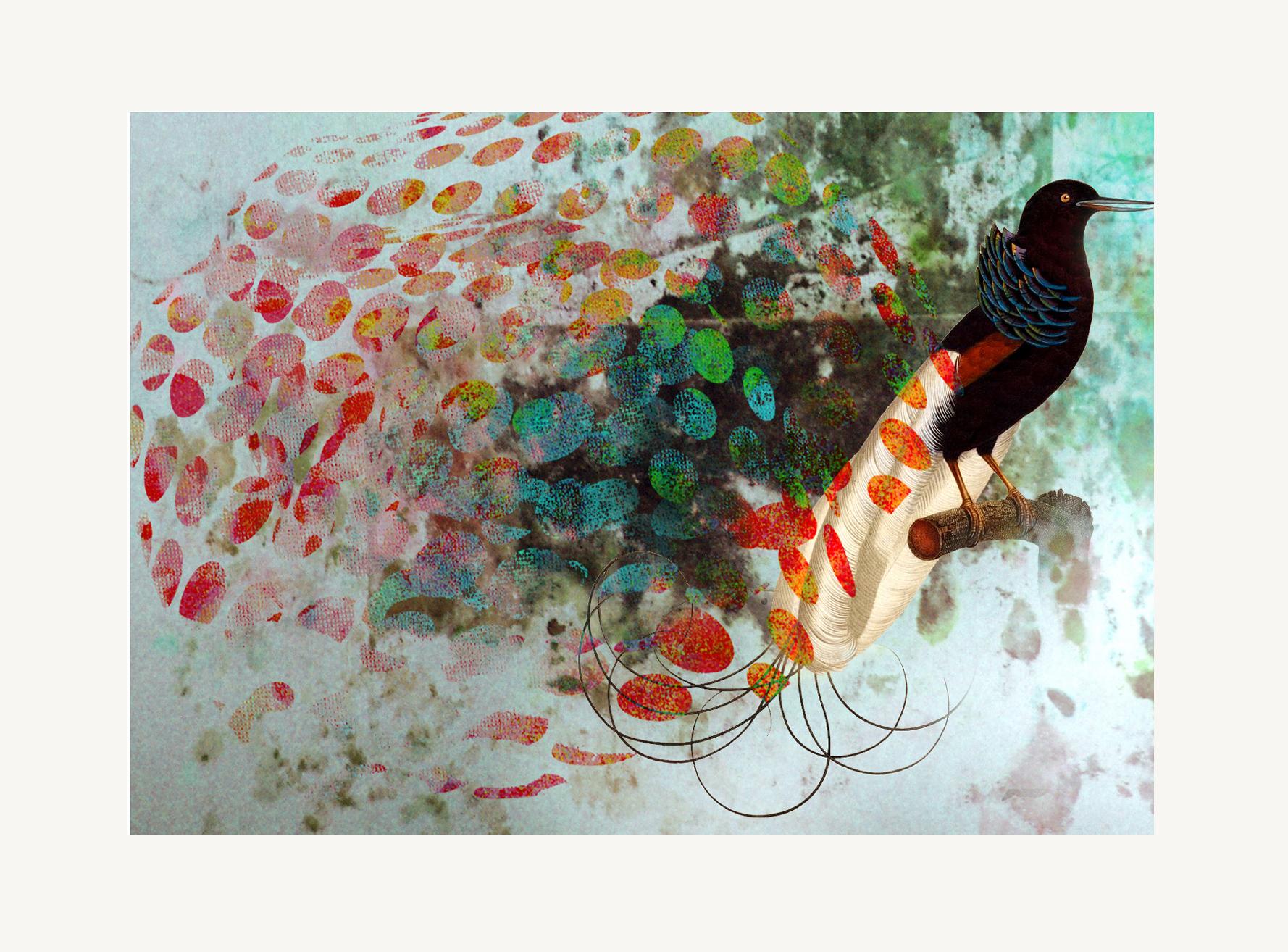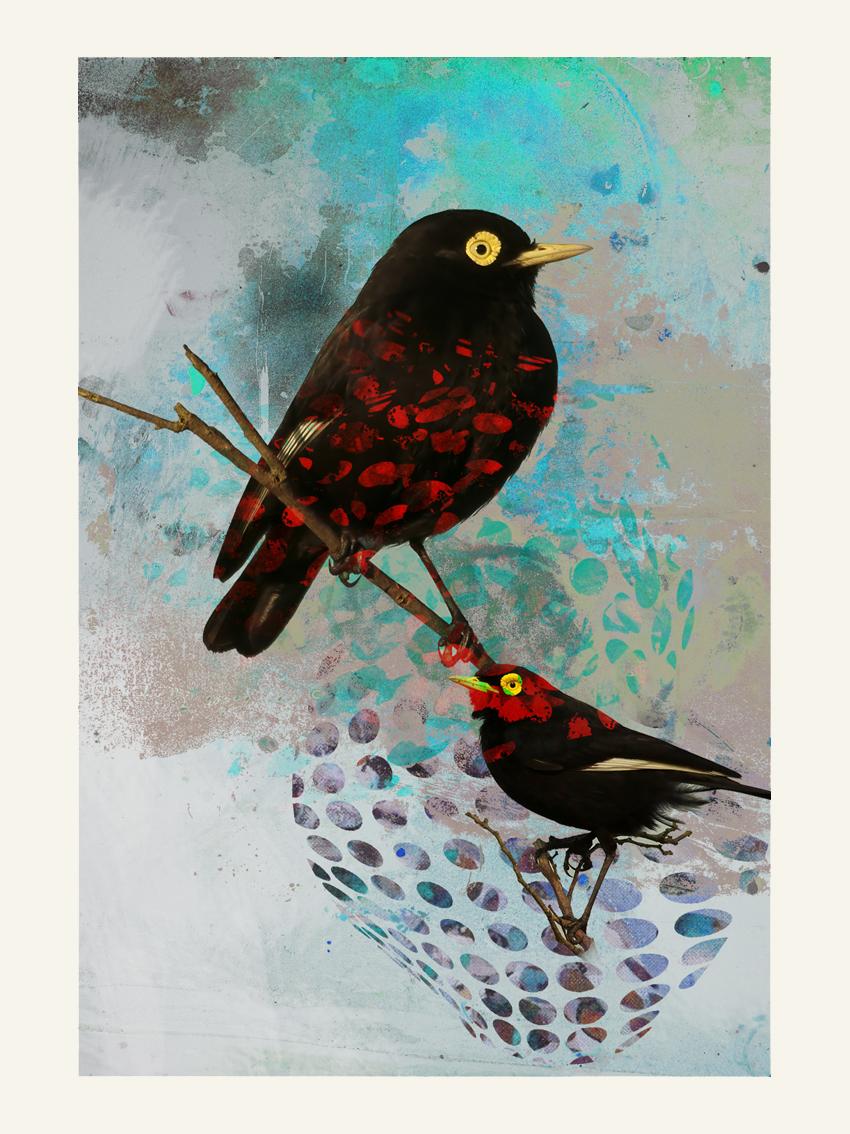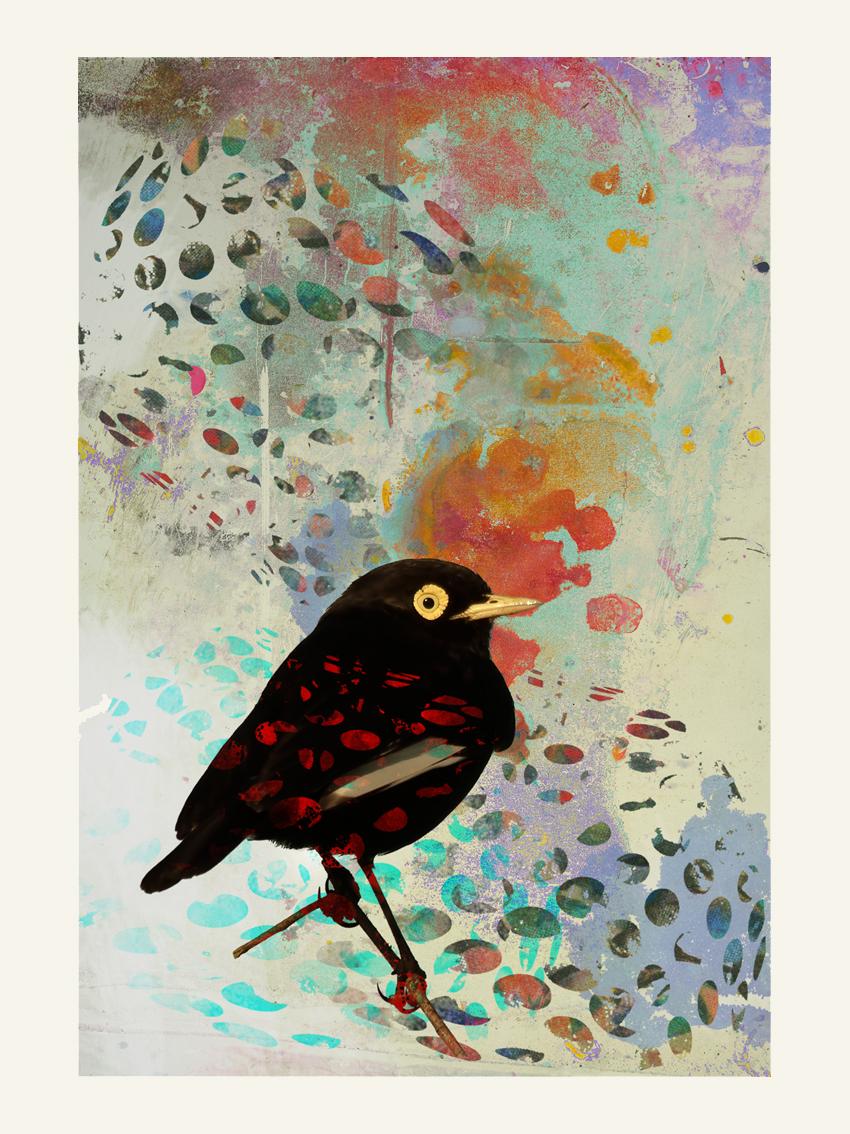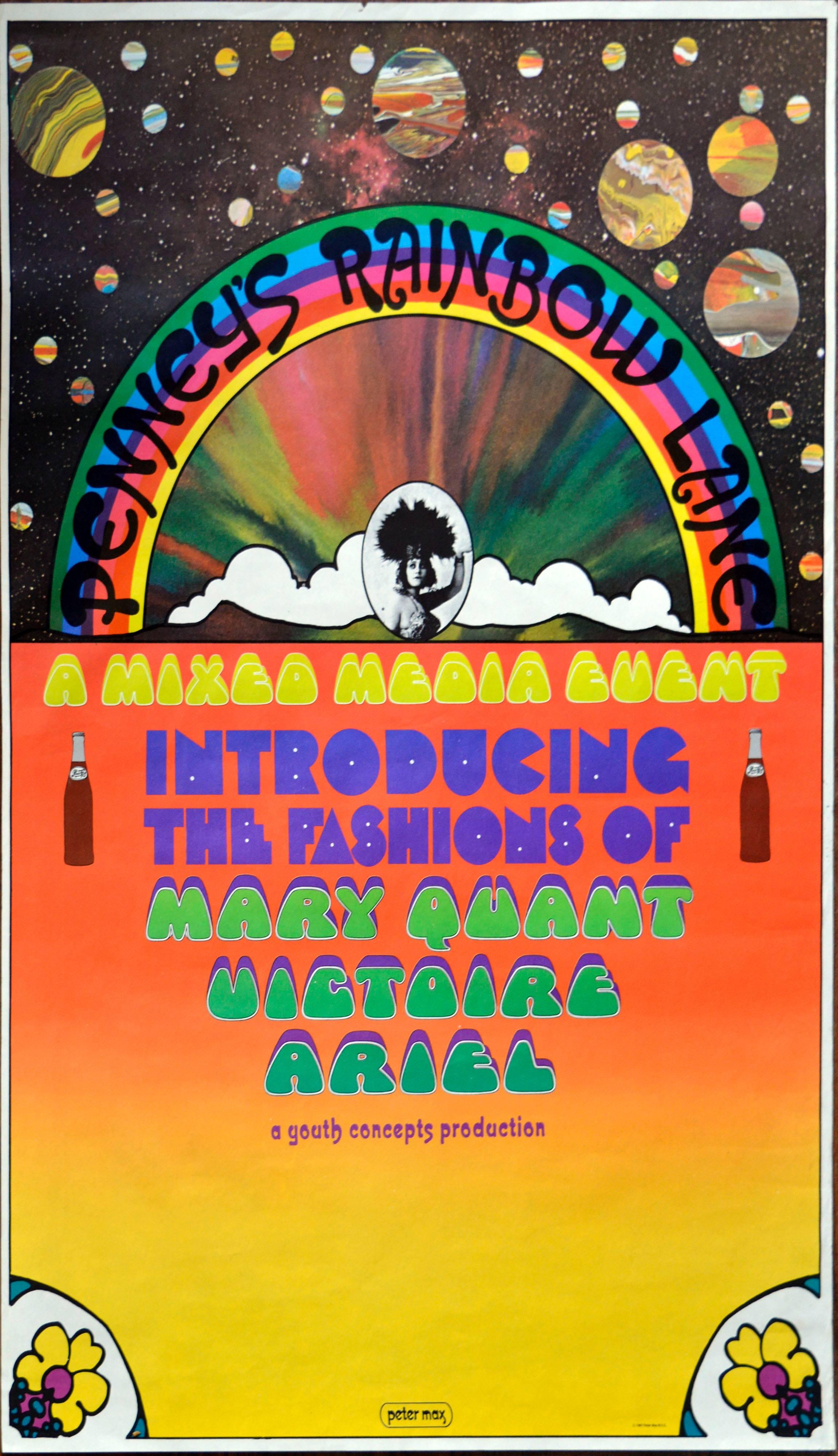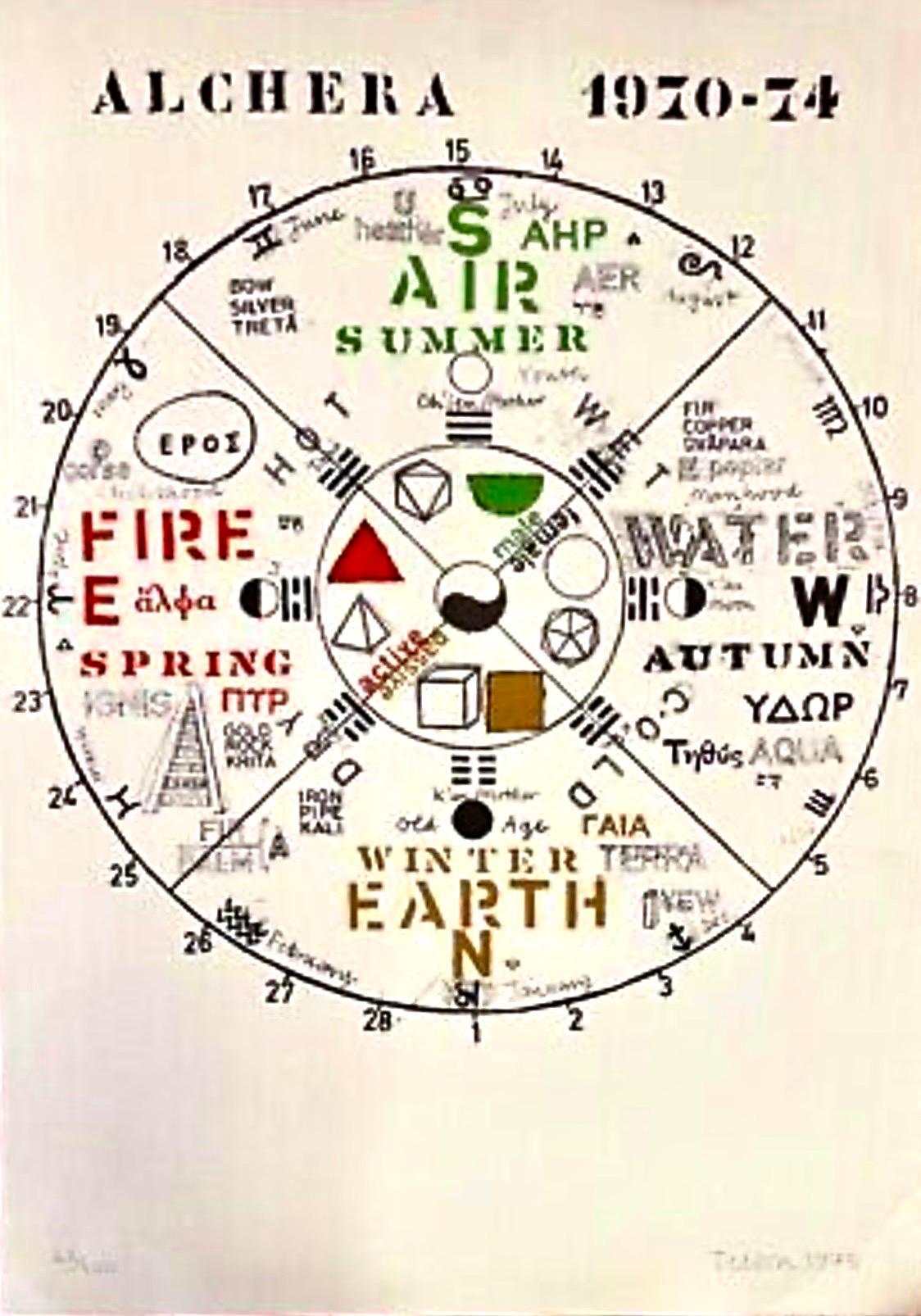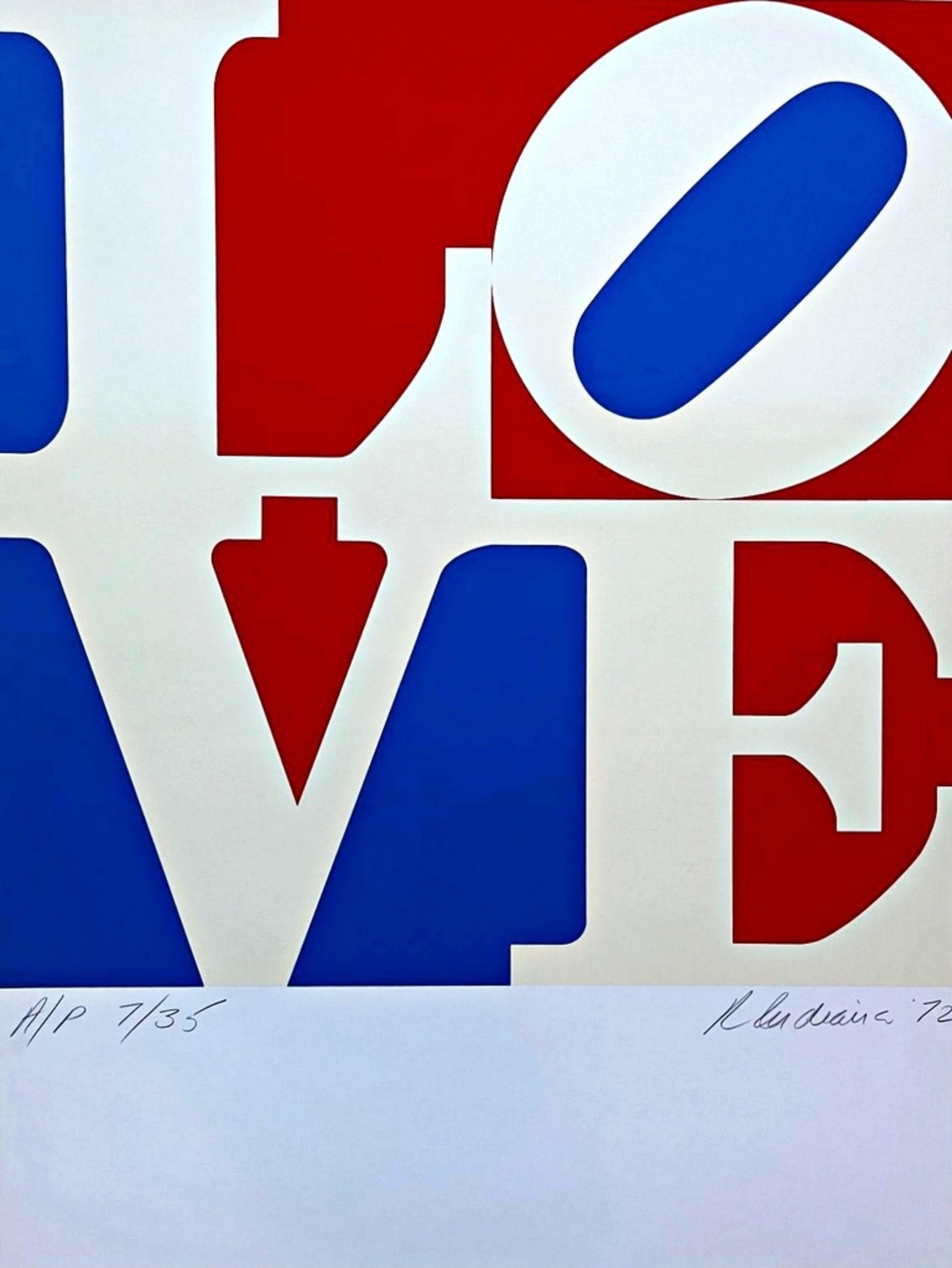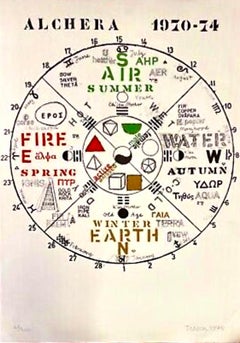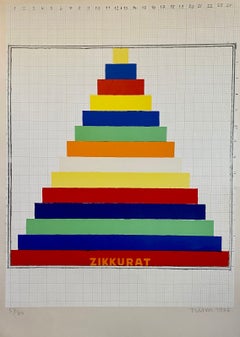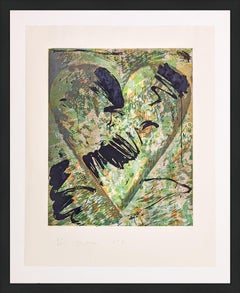
Huge Conceptual Pop Art 14 Color Figurative Woodcut Print "Shadow Nature"
View Similar Items
Want more images or videos?
Request additional images or videos from the seller
1 of 12
Robin WintersHuge Conceptual Pop Art 14 Color Figurative Woodcut Print "Shadow Nature" 1989
1989
About the Item
- Creator:Robin Winters (1950)
- Creation Year:1989
- Dimensions:Height: 63 in (160.02 cm)Width: 45.25 in (114.94 cm)
- Medium:
- Movement & Style:
- Period:
- Condition:good. light wear to frame.
- Gallery Location:Surfside, FL
- Reference Number:1stDibs: LU3825802962
About the Seller
4.9
Platinum Seller
These expertly vetted sellers are 1stDibs' most experienced sellers and are rated highest by our customers.
Established in 1995
1stDibs seller since 2014
1,541 sales on 1stDibs
Typical response time: 1 hour
More From This SellerView All
- Joe Tilson British Pop Art Screenprint, Color Lithograph 4 Seasons 4 ElementsBy Joe TilsonLocated in Surfside, FLSilkscreen screenprint or Lithograph Hand signed and numbered. An esoteric, mystical, Kabbala inspired print with Hebrew as well as other languages. Joseph Charles Tilson RA (born 2...Category
1970s Pop Art Abstract Prints
MaterialsLithograph, Screen
- Vibrant 1975 Joe Tilson British Pop Art Screenprint, Woodblock, Colorful PrintBy Joe TilsonLocated in Surfside, FLSilkscreen screenprint. Hand signed and numbered. A pyramid or ziggurat in vibrant colors of blue, red, yellow, orange and green on heavy paper Joseph Charles Tilson RA (born 24 Au...Category
1970s Pop Art Abstract Prints
MaterialsScreen
- Vintage Modern Lithograph Poster 1960s Pop Art Mod FigureBy Richard LindnerLocated in Surfside, FLVintage 1960's Lithograph poster for Vancouver Canada art show. Richard Lindner was born in Hamburg, Germany. In 1905 the family moved to Nuremberg, where Lindners mother was owner o...Category
1960s Pop Art Abstract Prints
MaterialsLithograph
- Deborah Kass Feminist Jewish American Pop Art Silkscreen Screenprint Ltd EditionBy Deborah KassLocated in Surfside, FLDeborah Kass (born 1952) Limited edition geometric abstract lithograph in colors on artist paper. Hand signed and dated in pencil to lower right. 1973. Edition: 102/120 to lower left. Dimensions: sight: 16-3/4" W x 21-1/4" H. Frame: 24-5/8" W x 28-7/8" H. Finding inspiration in pop culture, political realities, film, Yiddish, art historical styles, and prominent art world figures, Deborah Kass uses appropriation in her work to explore notions of identity, politics, and her own cultural interests. She received her BFA in painting at Carnegie Mellon University and studied at the Whitney Museum Independent Study Program and the Art Students League of New York. Deborah Kass (born 1952) is an American artist whose work explores the intersection of pop culture, art history, and the construction of self. Deborah Kass works in mixed media, and is most recognized for her paintings, prints, photography, sculptures and neon lighting installations. Kass's early work mimics and reworks signature styles of iconic male artists of the 20th century including Frank Stella, Andy Warhol, Jackson Pollock, and Ed Ruscha. Kass's technique of appropriation is a critical commentary on the intersection of social power relations, identity politics, and the historically dominant position of male artists in the art world. Deborah Kass was born in 1952 in San Antonio, Texas. Her grandparents were from Belarus and Ukraine, first generation Jewish immigrants to New York. Kass's parents were from the Bronx and Queens, New York. Her father did two years in the U.S. Air Force on base in San Antonio until the family returned to the suburbs of Long Island, New York, where Kass grew up. Kass’s mother was a substitute teacher at the Rockville Centre public schools and her father was a dentist and amateur jazz musician. At age 14, Kass began taking drawing classes at The Art Students League in New York City which she funded with money she made babysitting. In the afternoons, she would go to theater on and off Broadway, often sneaking for the second act. During her high school years, she would take her time in the city to visit the Museum of Modern Art, where she would be exposed to the works of post-war artists like Frank Stella and Willem De Kooning. At age 17, Stella’s retrospective exhibition inspired Kass to become an artist as she observed and understood the logic in his progression of works and the motivation behind his creative decisions. Kass received her BFA in Painting at Carnegie Mellon University (the alma mater of artist Andy Warhol), and studied at the Whitney Museum Independent Study Program Here, she created her first work of appropriation, Ophelia’s Death After Delacroix, a six by eight foot rendition of a small sketch by the French Romantic artist, Eugène Delacroix. At the same time Neo-Expressionism was being helmed by white men in the late Reagan years, women were just beginning to create a stake in the game for critical works. “The Photo Girls...Category
2010s Pop Art Figurative Prints
MaterialsScreen
- 1971 Modernist Lithograph Redhead Pop Art Mod Fashionable Woman Richard LindnerBy Richard LindnerLocated in Surfside, FLRICHARD LINDNER (American. 1901-1978) Hand Signed limited edition lithograph with blindstamp Publisher: Shorewood-Bank Street Atelier for the Skowhegan School of Painting and Sculpture 29.25 X 22 inches Richard Lindner was born in Hamburg, Germany. In 1905 the family moved to Nuremberg, where Lindner's mother was owner of a custom-fitting corset business and Richard Lindner grew up and studied at the Kunstgewerbeschule (Arts and Crafts School since 1940 Academy of Fine Arts). From 1924 to 1927 he lived in Munich and studied there from 1925 at the Kunstakademie. In 1927 he moved to Berlin and stayed there until 1928, when he returned to Munich to become art director of a publishing firm. He remained there until 1933, when he was forced to flee to Paris, where he became politically engaged, sought contact with French artists and earned his living as a commercial artist. He was interned when the war broke out in 1939 and later served in the French Army. In 1941 he went to the United States and worked in New York City as an illustrator of books and magazines (Vogue, Fortune and Harper's Bazaar). He began painting seriously in 1952, holding his first one-man exhibit in 1954. His style blends a mechanistic cubism with personal images and haunting symbolism. LIndner maintained contact with the emigre community including New York artists and German emigrants (Albert Einstein, Marlene Dietrich, Saul Steinberg). Though he became a United States citizen in 1948, Lindner considered himself a New Yorker, but not a true American. However, over the course of time, his continental circus women became New York City streetwalkers. New York police uniforms replaced European military uniforms as symbols of authority.At a time when Abstract Expressionism was all the rage, Lindner’s painting went against the current and always kept its distance. His pictorial language of vibrant colours and broad planes of colour and his urban themes make him a forerunner of American Pop Art. At the same time, he owes the critical tone of his paintings to the influence of European art movements such as Neue Sachlichkeit and Dada. His first exhibition did not take place until 1954, by which time he was over fifty, and, interestingly, it was held at the Betty Parsons Gallery in New York, a venue associated with the American Expressionists. From 1952 he taught at the Pratt Institute, Brooklyn, from 1967 at Yale University School of Art and Architecture, New Haven. In 1957 Lindner got the William and Norma Copley Foundation-Award. In 1965 he became Guest Professor at the Akademie für Bildende Künste, Hamburg. His Ice (1966, Whitney Museum of American Art) established a connection between the metaphysical tradition and pop art. He did work on Rowlux which was used by a number of pop artists (most notably Roy Lichtenstein)The painting shows harsh, flat geometric shapes framing an erotic but mechanical robot-woman. His paintings used the sexual symbolism of advertising and investigated definitions of gender roles in the media. While influencing Pop Art (Andy Warhol, Tom Wesselmann and Claes Oldenburg amongst others) his highly colourful, hard-edge style seems to have brought him close to Pop Art, which he rejected. Nevertheless, he is immortalised on the cover of the Beatles record "Sgt. Pepper’s Lonely Hearts Club Band" (1967) as a patron of the pop culture. He also did a tapestry banner with the Betsy Ross Flag...Category
1970s Pop Art Abstract Prints
MaterialsLithograph
- Deborah Kass Feminist Jewish American Pop Art Silkscreen Screenprint Ltd EditionBy Deborah KassLocated in Surfside, FLDeborah Kass (born 1952) Being Alive, 2012 nine-color silkscreen, one color blend on 2-ply museum board Image 24 x 24 image. Frame 29 x 29 x 2 inches Edition 1/65 Hand signed and dated in pencil, lower right verso; numbered lower left verso Being Alive is from a vibrant and uplifting body of work entitled Feel Good Paintings for Feel Bad Times. Finding inspiration in pop culture, political realities, film, Yiddish, art historical styles, and prominent art world figures, Deborah Kass uses appropriation in her work to explore notions of identity, politics, and her own cultural interests. She received her BFA in painting at Carnegie Mellon University and studied at the Whitney Museum Independent Study Program and the Art Students League of New York. Deborah Kass (born 1952) is an American artist whose work explores the intersection of pop culture, art history, and the construction of self. Deborah Kass works in mixed media, and is most recognized for her paintings, prints, photography, sculptures and neon lighting installations. Kass's early work mimics and reworks signature styles of iconic male artists of the 20th century including Frank Stella, Andy Warhol, Jackson Pollock, and Ed Ruscha. Kass's technique of appropriation is a critical commentary on the intersection of social power relations, identity politics, and the historically dominant position of male artists in the art world. Deborah Kass was born in 1952 in San Antonio, Texas. Her grandparents were from Belarus and Ukraine, first generation Jewish immigrants to New York. Kass's parents were from the Bronx and Queens, New York. Her father did two years in the U.S. Air Force on base in San Antonio until the family returned to the suburbs of Long Island, New York, where Kass grew up. Kass’s mother was a substitute teacher at the Rockville Centre public schools and her father was a dentist and amateur jazz musician. At age 14, Kass began taking drawing classes at The Art Students League in New York City which she funded with money she made babysitting. In the afternoons, she would go to theater on and off Broadway, often sneaking for the second act. During her high school years, she would take her time in the city to visit the Museum of Modern Art, where she would be exposed to the works of post-war artists like Frank Stella and Willem De Kooning. At age 17, Stella’s retrospective exhibition inspired Kass to become an artist as she observed and understood the logic in his progression of works and the motivation behind his creative decisions. Kass received her BFA in Painting at Carnegie Mellon University (the alma mater of artist Andy Warhol), and studied at the Whitney Museum Independent Study Program Here, she created her first work of appropriation, Ophelia’s Death After Delacroix, a six by eight foot rendition of a small sketch by the French Romantic artist, Eugène Delacroix. At the same time Neo-Expressionism was being helmed by white men in the late Reagan years, women were just beginning to create a stake in the game for critical works. “The Photo Girls” consisted of artists like Sherrie Levine, Cindy Sherman, and Barbara Kruger. Kass felt that content of these works connected those of the post-war abstract painters of the mid-70s including Elizabeth Murray, Pat Steir, and Susan Rothenberg. All of these artists critically explored art in terms of new subjectivities from their points-of-view as women. Kass took from these artists the ideas of cultural and media critique, inspiring her Art History Paintings. Kass is most famous for her “Decade of Warhol,” in which she appropriated various works by the pop artist, Andy Warhol. She used Warhol’s visual language to comment on the absence of women in art history at the same time that Women’s Studies began to emerge in academia. Reading texts on subjectivity, objectivity, specificity, and gender fluidity by theorists like Judith Butler and Eve Sedgwick, Kass became literate in ideas surrounding identity. She engaged with art history through the lens of feminism, because of this theory which “The Photo Girls” drew upon. Kass's work is in the collections of the Museum of Modern Art; Whitney Museum of American Art; Solomon R. Guggenheim Museum; Jewish Museum (New York); Museum of Fine Art, Boston; Cincinnati Museum of Art; New Orleans Museum; National Portrait Gallery, Smithsonian Institution; Fogg Museum, Harvard Art Museums; and Weatherspoon Museum, among others. In 2012 Kass's work was the subject of a mid-career retrospective Deborah Kass, Before and Happily Ever After at The Andy Warhol Museum in Pittsburgh, PA. An accompanying catalogue published by Skira Rizzoli, included essays by noted art historians Griselda Pollock, Irving Sandler, Robert Storr, Eric C. Shiner and writers and filmmakers Lisa Liebmann, Brooks Adams, and John Waters. Kass's work has been shown at international private and public venues including at the Venice Biennale, the Istanbul Biennale, the Museum Ludwig, Cologne, the Museum of Modern Art, The Jewish Museum, New York, the National Portrait Gallery, and the Museum of Fine Arts, Boston. A survey show, Deborah Kass, The Warhol Project traveled across the country from 1999–2001. She is a Senior Critic in the Yale University M.F.A. Painting Program. Kass's later paintings often borrow their titles from song lyrics. Her series feel good paintings for feel bad times, incorporates lyrics borrowed from The Great American Songbook, which address history, power, and gender relations that resonate with Kass's themes in her own work. In Kass's first significant body of work, the Art History Paintings, she combined frames lifted from Disney cartoons with slices of painting from Pablo Picasso, Jasper Johns, Jackson Pollock, and other contemporary sources. Establishing appropriation as her primary mode of working, these early paintings also introduced many of the central concerns of her work to the present. Before and Happily Ever After, for example, coupled Andy Warhol’s painting of an advertisement for a nose job with a movie still of Cinderella fitting her foot into her glass slipper, touching on notions of Americanism and identity in popular culture. The Art History Paintings series engages critically with the history of politics and art making, especially exploring the power relationship of men and women in society. Deborah Kass's work reveals a personal relationship she shares with particular artworks, songs and personalities, many of which are referenced directly in her paintings. In 1992, Kass began The Warhol Project. Beginning in the 1960s, Andy Warhol’s paintings employed mass production through screen-printing to depict iconic American products and celebrities. Using Warhol’s stylistic language to represent significant women in art, Kass turned Warhol’s relationship to popular culture on its head by replacing them with subjects of her own cultural interests. She painted artists and art historians that were her heroes including Cindy Sherman, Elizabeth Murray, and Linda Nochlin. Drawing upon her childhood nostalgia, the Jewish Jackie series depicts actress Barbra Streisand, a celebrity with whom she closely identifies, replacing Warhol's prints of Jackie Kennedy Onassis and Marilyn Monroe. Her My Elvis series likewise speaks to gender and ethnic identity by replacing Warhol's Elvis with Barbra Streisand from Yentl: a 1983 film in which Streisand plays a Jewish woman who dresses and lives as a man in order to receive an education in the Talmudic Law. Kass's Self Portraits as Warhol further deteriorates the idea of rigid gender norms and increasingly identifies the artist with Warhol. By appropriating Andy Warhol's print Triple Elvis and replacing Elvis Presley with Barbara Streisand’s Yentl, Kass is able to identify herself with history’s icons, creating a history with powerful women as subjects of art. The work embodies her concerns surrounding gender representation, advocates for a feminist revision of art, and directly challenges the tradition of patriarchy. America's Most Wanted is a series of enlarged black-and-white screen prints of fake police mug shots. The collection of prints from 1998–1999 is a late-1990s update of Andy Warhol’s 1964 work 13 Most Wanted Men, which featured the most wanted criminals of 1962. The “criminals” are identified in titles only by first name and surname initial, but in reality the criminals depicted are individuals prominent in today's art world. Some of the individuals depicted include Donna De Salvo, deputy director for international initiatives and senior curator at the Whitney Museum of American Art; Thelma Golden, director and chief curator of the Studio Museum in Harlem, and Robert Storr, dean of the Yale School of Art. Kass's subjects weren’t criminals. Through this interpretation, Kass show's how they are wanted by aspirants for their ability to elevate artists’ careers. The series explores the themes of authorship and the gaze, at the same time problematizing certain connotations within the art world. In 2002, Kass began a new body of work, feel good paintings for feel bad times, inspired, in part, by her reaction to the Bush administration. These works combine stylistic devices from a wide variety of post-war painting, including Ellsworth Kelly, Frank Stella, Jackson Pollock, Andy Warhol, and Ed Ruscha, along with lyrics by Stephen Sondheim, Laura Nyro, and Sylvester, among others, pulling from popular music, Broadway show tunes, the Great American Songbook, Yiddish, and film. The paintings view American art and culture of the last century through the lens of that time period's outpouring of creativity that was the result of post-war optimism, a burgeoning middle class, and democratic values. Responding to the uncertain political and ecological climate of the new century in which they have been made, Kass's work looks back on the 20th century critically and simultaneously with great nostalgia, throwing the present into high relief. Drawing, as always, from the divergent realms of art history, popular culture, political realities, and her own political and philosophical reflection, the artist continues into the present the explorations that have characterized her paintings since the 1980s in these new hybrid textual and visual works. OY/YO In 2015, Two Tree Management Art in Dumbo commissioned of a monumentally scaled installation of OY/YO for the Brooklyn Bridge Park. The sculpture, measuring 8×17×5 ft., consists of big yellow aluminum letters, was installed on the waterfront and was visible from the Manhattan. It spells “YO” against the backdrop of Brooklyn. The flip side, for those gazing at Manhattan, reads “OY.”[ An article and photo appeared on the front page of the New York Times 3 days after its installation in the park. An instant icon, OY/YO stayed at that site for 10 months where it became a tourist destination, a favorite spot for wedding, graduation, class photos and countless selfies. After its stay in Dumbo it moved to the ferry stop at North 6th Street in Williamsburg, Brooklyn for a year, where it greeted ferry riders. Since 2011, OY/YO has been a reoccurring motif in Deborah Kass's work in the form of paintings, prints, and tabletop sculptures. Kass first created “OY” as a painting riffing on Edward Ruscha’s 1962 Pop canvas, “OOF.” She later painted “YO” as a diptych that nodded to Picasso's 1901 self-portrait, “Yo Picasso” (“I, Picasso”). OY/YO is now installed in front of the Brooklyn Museum. Another arrived at Stanford University in front of the Cantor Arts Center late 2019. A large edition of OY/YO was acquired by the Jewish Museum in New York in 2017 and is on view in the exhibition Scenes from the Collection. On December 9, 2015 Deborah Kass introduced her new paintings that incorporated neon lights in an exhibition at Paul Kasmin Gallery entitled "No Kidding" in Chelsea, New York. The exhibition was an extension of her Feel Good Paintings for Feel Bad Times, but it sets a darker, tougher tone as she reflects on contemporary issues such as global warming, institutional racism, political brutality, gun violence, and attacks on women's health, through the lens of minimalism and grief. The series is ongoing. Deborah Kass has spoken about creating an “ode to the great Louises,” a space dedicated to her works inspired by famous Louise’s which she would call the “Louise Suite.” The earliest of these odes is “Sing Out Louise,” a 2002 oil on linen painting from her Feel Good Paintings Feel Bad Times collection. “Sing out Louise” is driven by her fondness for Rosalind Russel and the fact Kass feels it is her time to “Sing Out] “After Louise Bourgeois” is a 2010 sculpture made of neon and transformers on powder-coated aluminum monolith; it is a spiraling neon light with a phrase inspired by French-American artist Louise Bourgeois.[22] The neon installation reads “A woman has no place in the art world unless she proves over and over again that she won’t be eliminated.” Kass changed the quote slightly to better represent her beliefs but it was derived from Bourgeois. “After Louise Nevelson” is a 2020 spiraling neon work of art that reads "Anger? I'd be dead without my anger" a quote from American sculptor, Louise Nevelson. Award and Grants New York Foundation for the Arts, inducted into NYFA Hall of Fame (2014) Art Matters Inc. Grant (1996) Art Matters Inc. Grant (1992) New York Foundation for the Arts, Fellowship in Painting 1987 National Endowment for the Arts, Painting (1991) National Endowment For The Arts (1987) Selected solo and group exhibitions The Jewish Museum, New York, NY, “Scenes from the Collection” National Portrait Gallery, Washington, DC “Eye Pop: the Celebrity Gaze” Paul Kasmin Gallery, New York, NY, “No Kidding” (2015-2016) Sargent...Category
2010s Pop Art Figurative Prints
MaterialsScreen
You May Also Like
- Face of a Woman, Figurative Abstract Pop Art Woodcut Portrait on Handmade PaperBy Paula WalzerLocated in Soquel, CAFace of a Woman, Figurative Abstract Pop Art Woodcut Portrait on Handmade Paper Bold pop art woodcut print on handmade paper of a woman's face in black and red, repeated in 4 vertical registers like a film strip, by Monterey Bay artist Paula Walzer...Category
Late 20th Century Pop Art Figurative Prints
MaterialsPaper, Handmade Paper, Woodcut
- CALLED BY SAKE (C.70)By Jim DineLocated in Aventura, FLWoodcut, collagraph and photo-engraving in colors, on Rives Lightweight Cream paper, with full margins. Hand signed, dated and numbered lower front by Jim Dine. From the edition of...Category
1990s Pop Art Abstract Prints
MaterialsPaper, Engraving, Woodcut
- Birds 001 -Contemporary, Abstract, Modern, Pop art, Surrealist, LandscapeBy Francisco NicolásLocated in London, LondonBirds 001, 2017 Digital pigment print Ultrachrome ink on Fabriano Rosaspina paper. Hand signed by the artist, and certificate of authenticity. Edition of 25 (Unframed) His work ha...Category
2010s Pop Art Abstract Prints
MaterialsPaper, Inkjet, Pigment, Archival Pigment
- Birds 003 -Contemporary, Abstract, Modern, Pop art, Surrealist, LandscapeBy Francisco NicolásLocated in London, LondonBirds 003, 2017 Digital pigment print Ultrachrome ink on Fabriano Rosaspina paper. Hand signed by the artist, and certificate of authenticity. Edition of 25 (Unframed) His work ha...Category
2010s Pop Art Abstract Prints
MaterialsPaper, Inkjet, Pigment, Archival Pigment
- F0116-Contemporary, Abstract, Animals, Modern, Pop art, Surrealist, Street ArtBy Francisco NicolásLocated in London, LondonBirds 0034B, 2017, this work is framed, signed and with certificate of authenticity. His work has been shown in Reina Sofía Museum of Madrid, Royal Academy of London, Arco Madrid, ...Category
2010s Pop Art Abstract Prints
MaterialsArchival Pigment, Paper, Inkjet, Pigment
- Birds 002 -Contemporary, Abstract, Modern, Pop art, Surrealist, LandscapeBy Francisco NicolásLocated in London, LondonBirds 002, 2017 Digital pigment print Ultrachrome ink on Fabriano Rosaspina paper. Hand signed by the artist, and certificate of authenticity. Edition of 25 (Unframed) His work ha...Category
2010s Pop Art Abstract Prints
MaterialsPaper, Inkjet, Pigment, Archival Pigment


